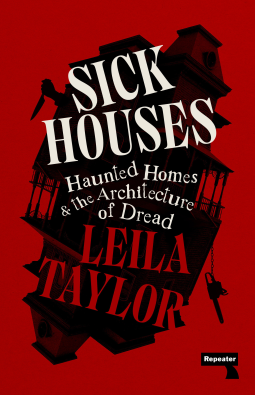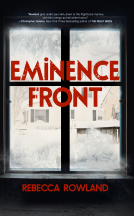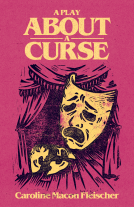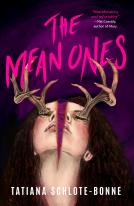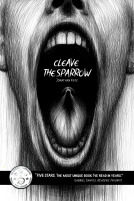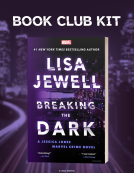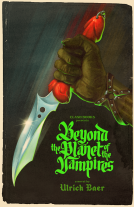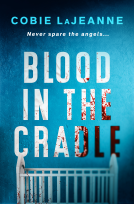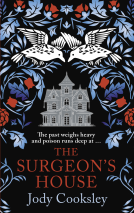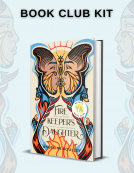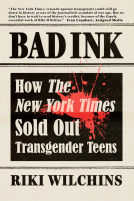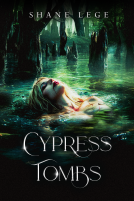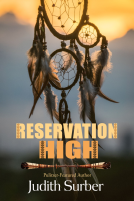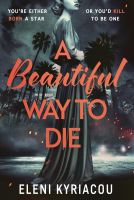Sick Houses
Haunted Homes and the Architecture of Dread
by Leila Taylor
You must sign in to see if this title is available for request. Sign In or Register Now
Send NetGalley books directly to your Kindle or Kindle app
1
To read on a Kindle or Kindle app, please add kindle@netgalley.com as an approved email address to receive files in your Amazon account. Click here for step-by-step instructions.
2
Also find your Kindle email address within your Amazon account, and enter it here.
Pub Date 11 Feb 2025 | Archive Date Not set
Repeater Books | Repeater
Talking about this book? Use #SickHouses #NetGalley. More hashtag tips!
Description
Horror begins at home
From family homes in Amityville to Gothic mansions in Los Angeles and the Unabomber's cabin, houses often capture and contain the horror that has happened within them.
Sick Houses crosses the threshold of these eerie spaces to explore how different types of architecture become vessels for terror and how these spaces, meant to shelter us, instead become the source of our deepest fears. Using film, television, and literature to explain why we are drawn to haunted and haunting places, Sick Houses is a must read for anyone who has ever looked at a house and sensed there might be something unsettling going on inside.
Advance Praise
"I've bought over a dozen copies of Leila Taylor's Darkly for friends and acquaintances since it first came out, and it remains to me one of the best and most essential books of the last ten years. Her latest, Sick Houses, is just as deft, insightful, and timely--and it's also destined to be a modern classic. Anyone who wants to know more about what makes a house haunted, and why we're drawn to such places in film and literature, should absolutely start here." - Colin Dickey
The homes of the normal, the eccentric, the magical, the violent, and the insane: Sick Houses reaches far beyond and far deeper into the lore and lure of the domestic space than any book before it. Leila Taylor has crafted a fascinating and comprehensive study into homes of all shapes and sizes, ages, and uses, homes from recent history and from popular culture. Examining issues of class, race, and gender, she asks us to reconsider why we consider a space a home, and why it becomes a place of haunting. - Shelagh Rowan-Legg
Available Editions
| EDITION | Other Format |
| ISBN | 9781915672636 |
| PRICE | US$16.95 (USD) |
| PAGES | 240 |
Available on NetGalley
Featured Reviews
I really enjoyed this! Taylor takes the reader on an exploration of what makes a house a home, and the more sinister steps that can turn a home back onto a house. She references famous haunted houses, the homes of serial killers and what society has come to view as a “haunted house”. There are detailed descriptions of ghosts, murders, unfortunate accidents and everything that could lead to a structure becoming sinister all by itself. I particularly enjoyed the social commentary on these so called haunted houses, and how they often reflect societal norms at the time. There were so many incredible conversations and observations in this book and clearly so much time and research went into it. A really fantastic book.
This was a fantastic concept for this type of book, it had that element that I was looking for and was hooked from the description. I thought it was a great idea to discuss the architecture of haunted houses. I enjoyed the way Leila Taylor wrote this and am excited for more.
 Cat M, Bookseller
Cat M, Bookseller
All the stars! LOVED this book which has gotten my 2025 reads off to a banging start! I devoured it in two sessions so I will be returning to it to fully savour the ideas and draw up lists of the horror books and films mentioned that I already knew but feel compelled to revisit, and those that I now want to read/watch for the first time. The bibliography will be my friend. I enjoyed googling further images and info as I went. I've just preordered a physical copy as this deserves a place on my shelves.
This book dives into what kinds of houses sends shivers down our spine, has us tip toeing down the halls, and peaking around corners, but it delves into the psychological “why” we do these things. Why does this type of house or the people who dwell within them give us the heebie jeebies? Is it because horror movies taught us to fear them, or because these houses drudge forth emotions, fears, hopes, and dreams that have been instilled Into us by our culture, economy, government, race, gender, religion and socioeconomic class .
Things that go bump in the night scare us because not only has it invaded a safe haven, our home, but we can’t see it and it can see us; a gross invasion of our privacy in our most sacred space. Are we really afraid of the old women in the ivy-covered Victorian houses, or do we fear the women who invoke a power they have been taught to repress. Of a woman that defies societal norms and does not keep a house for her husband and children, only herself. Since she does not want to bear children she must want to eat them, right?
This author does a great job at pitting these many issues against plots of horror movies to prove their point. It is not a subject I typically would’ve read about without the horror innuendos, but I ended up really enjoying in the long run. Thank you to NetGalley, Leila Taylor, and Repeater Books for an advanced reading copy in exchange for my honest review.
I am obsessed with houses. Some have good "vibes" and some have bad vibes. I find that I connect more with some houses too. I research historic homes in my community and that allows me to visit and tour all sorts of places.
I even threw a birthday party in the Browning Mansion.
So naturally I wanted to read this one. I loved it. I really loved it! I learned a lot. I might buy this for my friends for Galentines day.
 Reviewer 1583607
Reviewer 1583607
This book is an incredibly well written, thoroughly researched, and fascinating read. As I said in my longer review, Taylor takes the concept of the haunted house and explores all its facets, making for such an in depth and interesting book with sections such as 'witch houses', 'mad houses', and 'brutal houses'. I especially appreciated that Taylor takes into account the wider sociological contexts that the 'haunted house' is often cemented within, particularly when it comes to women. The writing is intelligent and humorous and most of all clear and accessible. While it explores many subjects, it never felt overwhelming. I would have appreciated more depth in a few places, such as the one on the book Piranesi, but overall I absolutely loved this book and it has become one of my non fiction favourite books of all time!
 Lauren M, Reviewer
Lauren M, Reviewer
"When a demon inhabits a body, it takes ownership of a person, a monster is temporarily housed inside of its victim, our body invaded, repossessed. The ghost does the same with s house: it breaks into it, takes possession of what is yours, and you can no longer trust the place you trusted the most. What’s more frightening than your own home turning against you?"
A look at the haunted house in both fiction and non-fiction, Sick Houses by Leila Taylor is an interesting exploration of what happens when the place that, by definition, we feel most at home in becomes something Other, something not quite right. Each chapter looks at a different kind of house, from houses of witchcraft (real or alleged) to houses in miniature, dollhouses or dioramas that reflect or influence their life-size counterparts.
First of all, I appreciated the parameters that the author put on her subject. She says in the introduction that “I’m not talking about plantation houses because 1) fuck them, and 2) I don’t consider slave quarters homes,” and she avoids prisons and hotels as well. By creating a clear focus on homes and not just houses/buildings, it creates an immediate connection with the reader — we will of course consider our own homes, the feeling of safety and comfort we feel in them, and we will contemplate the horror we would feel if that sense of safety was pulled out from under us.
I was also very interested in her discussion of the contradictory nature of the ideals of the American Dream: “Manifest destiny told us to ‘go west, young man,’ but this part of the American ideology is in direct contradiction with the long-term mortgage that locks you not only to a city or state but to a specific property for decades.” This contrast relates to a tension that often appears in horror films — a family moves into a dream home and is loath to leave it even when the going gets bad, or a family moves into a home that turns out to be haunted, but they don’t necessarily have any other option other than to try to see it through — and the tying of classic horror movie tropes to broader societal concepts is always interesting, especially when laid out well and backed by solid examples, as is seen in this book.
Some chapters are more thorough than others — the Witch Houses chapter has many more references than the chapter on Brutalism, for example — but overall there is a good amount of evidence and a good balance between real-life and fictional examples. The chapter on houses in miniature was particularly interesting. The author writes about the dioramas in Ari Aster’s Hereditary, and the way that the film’s sets were built to evoke the feeling that the actors, too, are moving (or, more accurately, being moved) within a diorama. On the real-life side of things, the discussion of the Nutshell Studies of Unexplained Death, a diorama series of crime scenes used to improve forensic investigation, was fascinating.
I did have a few issues with the book. For one, the author spoils the ending of several films in instances where I don’t feel that it’s necessary to support her thesis. Obviously in some cases of books like this, you have to give away the major plot points of your examples in order for them to be relevant — if you’re discussing antagonistic father-son relationships you can’t really use Star Wars as an example unless you tell anyone in your audience who isn’t yet aware of the connection between Luke and Vader.
However, in this book, regarding films discussed like The Others and His House, I think that enough information about their plots could have been given to make the intended point while still leaving some mystery for those who haven’t seen them. I know that I often use this type of book as a way to add to my to-watch or to-read list, offering more examples of a trope I am interested in, so spoiling the endings of books or films I haven’t seen yet is frustrating.
It also felt in some places that more time was spent cataloguing the “contents” of the houses (i.e. the plots of the films set there or, in the case of the real life examples, the crimes committed there) than the houses themselves.
In particular, some of the examples focusing on true crime started to feel too tangental, straying away from the connection to the houses/homes and delving too much into the events themselves. For example, I understood what the author was going for in connecting the novel Room and the tragic real-life story of “feral child” Genie, but in the case of the latter there was little connection to the thesis of the book.
Furthermore, at the start of the book the authors understandably says she won’t include places like slave’s quarters because these were not “homes” to the enslaved people living there, but then it follows that surely a place of imprisonment for Genie (or, in fiction, for the kidnapped inhabitants of Room) was not a “home” to be discussed either.
From the second half of the subtitle, “the Architecture of Dread,” I was hoping for more on the design of houses themselves. While this aspect does certainly get coverage in some sections of the book, looking at architectural oddities on screen and in reality, the trope of architecture that is Not Quite Right — houses that are bigger on the inside, stairways that don’t lead where they’re supposed to — is one of my favorites and I would’ve liked a deeper dive into some of these given the supposed secondary premise of the book.
That said, the sections looking at strange and unusual architecture did have some good moments, most interestingly in dispelling myths about the Winchester Mystery House (no, Sarah Winchester wasn’t taking her orders from ghosts; she was just a hobby architect). On the fiction side of things, I enjoyed the brief foray into one of my favorite books of all time, Susannah Clarke’s Piranesi, as a particularly good example of both impossible architecture and a false home (although I found it odd that one of the other most well-known examples of these tropes, Mark Danielewski’s House of Leaves, did not get a mention).
"This book is a catalog of houses that have gone wrong and the ways our built environment can evoke terror and dread. But more so this is a book about the home, and the idea of home, and how horror perverts and manipulates one of the most personal and intimate experiences we have as human beings."
I think that Sick Houses will appeal mostly to readers who already have an interest in the topic. At points it feels as though the author has cornered you at a party and is explaining her research project to you. For me, that’s fine, as it’s a long-standing interest of mine as well. But it may not work as well for readers who aren’t already fascinated by architectural horror or the unheimlich feeling of a haunted house.
But if the above quote draws you in, then this is definitely one to keep an eye out for when it’s published in 2025.
I'm not really a non-fiction kind of reader, but the description really appealed to the horror lover in me, and I was not disappointed!
The book takes you on a journey through both fictional and real-life houses of horror and peculiarity, with some areas being more fully covered than others. I was really fascinated with the story behind the high-rise multiple occupancy homes both in reality and as portrayed in film. I also enjoyed that one of my favourite miniaturist content creators was referenced in the book as it was a nice personal easter egg for me. Some of the photography was also brilliant, and I found myself wanting more reference pictures and looking up a lot of images as I read.
My only complaint is it did spoil the ending of a book on my TBR, and I didn't think it really needed to be done to get across the point of the story. Although I guess it's on me for not reading faster!
Overall, if you're like me and you only read one or 2 non-fiction a year, I'd recommend this one!
I saw this on NetGalley at the end of the last year and thought it would be a perfect fit to start the 2025 Year of Horror.
A great little journey through the house as a centre for the weird and spooky, whether that is just a normal person expanding their house as they desire or the abode of some of the most terrifying human beings. There are also explorations of some of the creepiest film and book houses where things definitely go bump in the night.
Written in a very accessible form this was such an enjoyable read, though there are quite a few spoilers in here for horror books and films, so beware when you start reading about a book that it may be spoiled in here.
This has added more books and films to my want to see/read list though and that’s always a good thing.
I really enjoyed how it took in both the factual and fictional creepiness of houses and took in the personal experience of spookiness, as we have to agree with Leila that there are always houses around that we just wouldn’t want to walk into in your neighbourhood.
A well thought out and executed look into the domestic side of horror that could have been a much larger book in my view.
I received this from NetGalley in exchange for an honest review.
What a fascinating combination of personal experience, film criticism and social commentary! I thought this was such an interesting concept and it did not disappoint- the author’s conversational tone brings life to the analysis. I think I’d have liked to hear more on about houses in fiction but that’s just a personal preference for literary studies and doesn’t negate how interesting I found this, or how informative it was. I’ve spoken to people about this already so I’ll definitely be enthusiastically handselling on publication. Looking forward to reading the author’s other work on black southern horror!
Sick Houses explores the architecture of the quintessential domestic space: the home. What makes our refuge, that place of protection, become unsettling? What haunts these spaces? Leila Taylor masterfully dissects what happens when a disruptive element intrudes upon our sanctuary, transforming it into a hostile setting, even a trap.
The connection with Taylor is almost immediate: she seems to share with me a series of neuroses and obsessions that are utterly fascinating. Her concern with understanding how a home can be desecrated to the point of becoming merely “a house” resonates deeply.
Through real-life examples intertwined with references to horror literature and cinema, Taylor attempts to explain the cases where the house becomes a character. Sometimes, it takes on an overwhelming prominence, with malevolent intentions that even overshadow its inhabitants, that fall victims to the building's perverse will.
The author dedicates each chapter to a specific type of house: the haunted house, the dollhouse, the witch’s house, and so on, interweaving themes and political analyses. For instance, she explores how capitalism and certain policies have created a culture that idealizes homeownership, making us vulnerable to its eventual perversion. The homeowner, having invested time, money, and hopes in their home, has no choice but to become a victim of the house.
Taylor’s analysis goes beyond mere anecdotes—though she uses concrete examples—and seeks out the possible origins, the initial malignant cell that contaminates a house and makes it sick, in a thoroughly compelling work of non-fiction that will captivate horror enthusiasts and curious minds alike.
Thanks to NetGalley and Repeater Books for this ARC
Thank you to NetGalley and the publisher for this ARC!
This is a fantastic concept, and I really found this kind of editorial essay approach to a fascinating non-fiction subject a good one for the topic. This book covers the idea of houses and homes and the in-between that gives us such a distinct sense of dread when dealing with the supernatural in them. I know this feeling well - we live in an incredibly old house, and have just as many cats as necessary to compensate for (presumably) all the ghosts that probably live here with us.
This book starts off with the concept of homes and then the concept of hauntings, and then further dives into interesting sub-genres of the haunted and bizarre in houses. There are segments dedicated to different forms of houses, often pulling on the strings of pop culture to bolster points and the concept of the weird. I found that there were some bits that were a bit too short, and drew on movies that I maybe would not have put into those precise contexts or segments, but they were still solid.
This is a really interesting read as a whole, and while I would have liked for it to be a bit longer, it is definitely an interesting book, and well worth the time!
 Reviewer 142279
Reviewer 142279
This book was a surprise for me. I was really drawn in by the description but still a bit apprehensive because I'm not a big reader of non-fiction. My love for haunted houses is bigger though... This was a very good book about the architecture of haunted houses. I learned so much and the research from the author really shines through. The writing style is not tedious and it's nothing like a textbook from school.
This book can reel you in and keep you close through the entire book.
Thanks to NetGalley, the publisher and the author for the chance to read this book.
 Kate T, Reviewer
Kate T, Reviewer
Sick Houses is a fascinating work of horror literary criticism that takes the reader on a tour of haunted houses, ranging from the fiction to non-fiction. Leila Taylor is a knowledgeable, engaging and insightful narrator: I found her writing style completely absorbing.
The definition of what makes a haunted house is wide ranging, including not only supernatural hauntings but more abstract ones, such as attempts to design architecture to influence human behaviour (High Rise), humans held in captivity (Room), and the way houses and inhabitants influence each other (the Unabomber cabin). It's a mark of how much I enjoyed this book that I didn't want it to end: there are plenty of haunted houses which didn't make the cut which I would love to hear Leila Taylor's take on. The haunted house is such a widespread and well established trope that it would be impossible to catalogue every one. Instead, the examples act as prompts to explore our expectations around houses and how we react when people fail to meet them.
Sick Houses focuses mainly on the American haunted house, with a few exceptions such as High Rise, The Others and His House. At times, I felt like the book would have benefitted by narrowing its focus to specifically American haunted houses, at others I would have liked to broaden it to include more international examples. However, the non-American examples were well chosen and added something interesting to the discussion that I would have been sorry to lose.
Thank you to NetGalley, Leila Taylor and Repeater books for an ARC in return for my honest review.
 George B, Reviewer
George B, Reviewer
Lelia Taylor’s Sick Houses is exactly the sort of cultural criticism meets Academic work that has established Repeater Books as one of the premier left-leaning non-fiction publishers working today.
Each chapter opens with an epigraph that ranges from academic philosophy to social media asides, and herein lies what Taylor does so well. Across the bulk of this text, Taylor is inspecting homes not as abstract spaces, nor as feats of architecture alone, but as spaces of human habitation, places we live and exist, and occupy, and make our own. At no point is the human effect of these houses ignored, styles of architecture are contextualised by what we demanded from them, from what we required from our residences, and not from ideas of spatial philanthropy. Like all great cultural criticism, Sick Houses looks at how we shape our own art through our own pathology.
The range of citations, quotations, and references pull from architectural theory, interviews with film makers, serial killers, and the author’s own experiences. For someone invested in theory, there is plenty to dig further into, but for a layman it is perfectly digestible, and even enlightening. When writing a book like this, a book that focuses on a singular object, event, trend, or any singular subject, it is important to be aware of all angles of analysis, such as Taylor is, but this offers the issue of depth. To go too deep would mean to offer a standing stone of a text that is divorced from anything other than reference guides and to offer too little would mean the text feels without weight. Sick Houses finds that rare balance. It is light on detail, it does fly past certain ideas, but they are all explored with the depth needed to inform rather than overwhelm. There is the opportunity and the encouragement of further reading but Taylor finds just the right level of detail needed to inform this essay on architectural horror so that the reader is at ease, is aware of contextual arguments, even if they remain novices on the subject.
The memoir within this text, the references to Taylor’s own architectural life, offers a wonderful rebuff to the idea that theory is stuffy, that analysis of art is simply making stuff up, prying deeper than we should. Through unravelling her own relationships to the issue at hand, Taylor reminds us of how artists are people too, with emotions, and attachments, and failings, and that is this very humanity that informs our own art. Ironic for a text concerned less with people than objects.
On a more formal level, Taylor is a wonderful prose artist and manages to somehow strike a tone between conversational and theoretical, between observations and academia. The text feels light, loose, open to veering off into unusual and exciting spots at a moment’s notice, but with a through line that remains front and centre. It would be very easy to take this to mean underwhelming but Sick Houses does exactly what it sets out to do, and brilliantly.
Would make a wonderful pairing with Repeater’s Capitalism: A Horror Story by Jon Greenaway.
A fascinating, and important, text.
Thank you to Net Galley and Repeater Books for the copy of this title.
A quick read indeed is Sick Houses, which is more of an essay than a novel per se. I love the comparison and contrast that the author makes when she speaks about a house vs. home. Some of this is spot on. However, I don’t have an affinity for haunted houses other than in a book.
The author also keeps referring to the Amityville house (and movie) due to its significance in the haunted house genre. However, I will say that I don’t know why this kept repeating itself in different chapters, but I should note that there have been so many conflicting stories about the Lutzs that it’s hard to believe what’s true or not. It hasn't stopped me from watching (and enjoying) that movie.
The book breaks down houses into a few categories, and the Amityville house is at the forefront of the chapter on American houses. It also talks about “The Conjuring House,” the house featured in “A Haunting in Connecticut," "The House on Haunted Hill," and the house that was featured in "Rose Red."
This book also touches on the importance that we as people place on owning a home and what it means. <i>“It’s one of the biggest events that signify financial stability, personal security, and a cohesive family unit.</I> I wholeheartedly agree that people are taught early on to desire homeownership.
It’s more than a place to decorate. It’s where you experience most of your life, and it’s where memories are created (good and bad). There is also emphasis that houses hold memories, but I think it's the individual who holds the memory about the house.
What I found most interesting was the discussion about high rises in our society and what they signify. Renting was seen as a bad thing until the modern monstrosities came about in the 60s, with every amenity one would need. <i>City living at its best.</i> It’s also mentioned that materials used to build the houses would also have a role to play.
This book connects horror to some of the most infamous houses and structures around the world and hones in on our insecurities about a home and what we love and fear most, as well as how horror takes that notion and capitalizes on it. It's art imitating life.
I loved this title, and some photos accompanying the various homes are extremely interesting and eerie. - Kudos
(I would love to share this in a future podcast)
Leila Taylor’s Sick Houses is such a fascinating deep dive into the world of haunted houses. It’s packed with insights about the cultural, historical, and psychological roots of these eerie spaces, all written in a way that’s both thought-provoking and engrossing. Taylor’s blend of sharp analysis and vivid storytelling makes it a truly captivating read, especially if haunted houses are your favorite horror subject like me!!
This is an endlessly fascinating study of what Stephen King famously describes as 'The Bad Place'. Leila Taylor begins by taking a look at home ownership, and details the hopes and fears that accompany moving from one house or apartment to another, sometimes attempting to bury bad memories in pursuit of security and happiness. The question of when does a house become a home is fully addressed and by the time we move on to what constitutes a undesirable residence, some readers may well be nodding their head with regard to past or current location.
Real and fictional places come under the spotlight in this book: the Ed Gein house of horrors; Amityville; the Winchester home and cinematic gems such as the Bates house from Psycho, the imposing gothic mansion from The Haunting and (bonus points for this one) the bone chilling centre of Peter Sasdy's The Stone Tape.
As well as movies, Leila also includes a literary angle in her study, and her brief description of 'Piranesi' compelled me to push the book to the top of my tbr pile.
Leila Taylor's writing is crisp and intelligent and happily - at least for people like me - is not overly academic. It never confuses with complicated jargon, and is easy to follow with a sharp, keen-eyed analysis of the subject matter. My own shallow knowledge of Victorian architecture and other building designs was certainly heightened by this enjoyable look at houses with a dark history and fresh builds with a clean slate.
A genuine 5 star delight!
Published by Repeater Books
95/100 or 4.75 stars
This was a fasinating read, and I am so glad I got a chance to check this out! It is right up my alley in terms of subject matter for a non-fiction book, and I has so much fun reading and learning!
It made me view a few movies differently and made me want to check out the ones that I have not seen yet.
10/10 would recommend for horror fans!
 Educator 1337729
Educator 1337729
A house is supposed to be a place of comfort, security, and refuge—but what happens when it becomes a source of terror instead? Sick Houses is a fascinating and chilling exploration of how architecture can hold and amplify horror, transforming our safest spaces into something sinister.
From infamous real-life locations like the Amityville house and the Unabomber’s cabin to the eerie mansions of gothic fiction and haunted homes in horror films, this book delves deep into why certain spaces feel inherently unsettling. Using examples from film, television, and literature, it unpacks how physical structures shape our fears—whether through their design, their history, or the eerie feeling that something just isn’t right.
What makes Sick Houses so compelling is its blend of psychological insight, cultural analysis, and spine-tingling storytelling. It doesn’t just recount ghost stories; it examines why we are drawn to them, why the idea of a haunted house is so universal, and how real-life horrors are often more terrifying than fiction. The book also raises thought-provoking questions about memory, trauma, and the ways in which architecture can hold onto the past.
Whether you're a horror aficionado, a fan of true crime, or simply someone who has ever looked at an old house and felt a chill run down your spine, Sick Houses is a must-read. It’s an engrossing, intelligent, and eerie deep dive into the dark side of the places we call home.
 Michelle M, Reviewer
Michelle M, Reviewer
Haunted houses, the homes of notorious series killers, those places you pass and just wonder about because they're a little odd -- that's what this book is about. And I LOVED it. The author delves into well known properties, both fictional and real, and also several that I'd never heard of. I came away from it with a fairly long list of movies I want to watch (surprising, because I love haunted house movies and have watched so many) and some new insight into movies I'd already watched. There are plenty of spoilers in the detailed plot discissions, but I don't really mind because I probably wouldn't have watched them if I hadn't read about them here. A few, I'll watch anyway. Another I'll go out of my way to avoid. The book sent me down quite a few interesting rabbit trails and I'm glad I picked it up.
 Rae M, Reviewer
Rae M, Reviewer
As a child, one of my deepest desires was to move into a house with a secret room. A secret staircase, a secret library. It hasn’t happened (YET) but the fantasy continues to play out throughout my dreams.
Reading Sick Houses reminded me of these dreams. Leila Taylor calls back to my nostalgic fear of the dark hallways of my childhood homes while also discussing fantastical homes that definitely have secret rooms. This book traces the origins of haunted houses from fiction to real life, from grotesquely oversized to miniature. Sick Houses is exquisitely well-researched while maintaining an fun, engaging tone that draws you ever deeper.
I enjoyed the author’s personal commentary throughout the book. For the record, we share the same opinion on surviving the apocalypse.
And one of my very favorite parts is that I finished this book feeling as though I had learned so much. I stopped every few pages to search for more information about the houses Taylor mentions.
I hope this book becomes a renowned work on haunted houses. It deserves it.
5/5 dollhouses
Thank you Netgalley for the opportunity to review this book!
